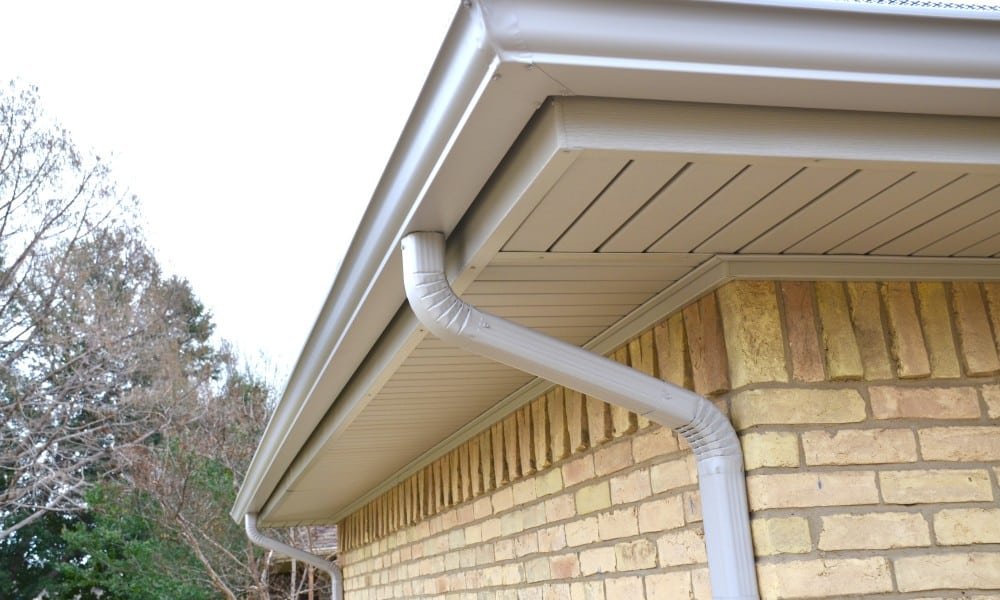Gutters are critical to your home’s protection, directing rainwater away from your siding, landscaping, and roof to prevent direct water damage and latent effects like mold and mildew. Different kinds of gutters offer varying levels of protection and durability.
K-style gutters have flat bottoms and outwardly angled sides. They’re a good choice for Victorian or historic homes.
K-Style Gutters
K-style gutters are a popular choice for homeowners because they offer many benefits. They are aesthetically pleasing and compatible with most roof types. They have a flat back for easy installation and a gracefully curved front that resembles crown molding when viewed from the side. These gutters also have the added benefit of being more leak-resistant than traditional round or box gutters.
Their unique shape also allows them to redirect rainwater away from your home, which can help prevent damage to your foundation or property. They can also handle more water than half-round gutters, which makes them a great option for areas with heavy rainfall.
K-style gutters are available in various materials, including aluminum, copper, vinyl, and galvanized steel. They are also relatively inexpensive and easy to find at most hardware stores and home improvement centers. K-style gutters also have fewer seams and corners where debris can collect, which can help reduce your maintenance costs. However, it is important to note that location, climate, and maintenance routine can affect gutter durability and lifespan.
Half-Round Gutters
Unlike the square gutters in many modern homes, half-round gutters offer a more curved and softer look. They are ideal for older styles of architecture or those that want a more classic aesthetic, such as Tudor or Victorian homes. They’re also easier to clean than K-style gutters because their rounded interiors don’t trap debris like square sides.
However, despite their appeal, they aren’t as effective at collecting and draining rainwater as K-style gutters. They’re also heavier and prone to sagging in heavy storms, which can cause damage to your fascia boards, soffit, and sidings.
Like other types of gutters, half-round gutters require professional installation to ensure they are properly angled and secured to your home. It is important to help protect your investment by using gutter guards with half-round gutters to keep them free of leaves and debris that could clog the drainage system.
Box-Style Gutters
Box gutters are shaped as their name suggests, and they don’t have much design. Instead, they blend in and almost resemble part of your fascia board. They are also flat, meaning they have a larger water-handling capacity than other gutter styles.
We commonly see these on commercial buildings, multi-family structures, and older homes. This is because they can handle a lot of rainwater runoff from flat roofs.
Another benefit of this style of gutter is that it can help protect your home from foundation, siding, and fascia-board damage by properly draining away rainwater. Plus, it can prevent mold and mildew from forming due to moisture penetration.
Box gutters are typically made from a wood frame covered by copper or galvanized steel to ensure longevity. They must be painted regularly to ensure color retention and dirt adhesion. This may be why you often see box gutters on historic buildings, as they can easily blend in with their architecture and not distract from the overall aesthetic.
Seamless Gutters
While they cost more upfront, seamless gutters offer many benefits that make them worth the investment. They remove water from your roof and channel it away from your home like regular sectional gutters. However, the main difference is that seamless gutters have fewer points of weakness. This is because they don’t have sections; they are long, uniform metal sections with seams only at downspouts and corners.
While this eliminates the possibility of leaks, it also limits clogs. Moreover, it reduces the need for gutter repair and maintenance, which helps save homeowners money.
Seamless gutters are made from aluminum, copper, and steel and come in various colors to match any exterior design aesthetic. They’re an attractive choice for any home and can even boost your property value when it comes time to sell. Furthermore, they look more appealing than sectional gutters, making cleaning much easier. That said, it’s important to have them professionally installed. Otherwise, they might not hold up against the elements over time.
Vinyl Gutters
Gutters significantly protect your home’s roof, soffit, fascia, and landscaping from water damage. The gutters’ main function is to divert rainwater and melting snow away from the home. A well-functioning gutter system will prevent water from eroding the foundation, damaging windows and siding, and causing internal leaks.
Gutter systems are available in many materials, including copper, aluminum, and vinyl. Vinyl is popular among homeowners and do-it-yourselfers due to its affordability and easy installation. It’s also resistant to dents and corrosion. Vinyl gutters are marketed in various colors, making it easy for homeowners to match them aesthetically with their homes.
The downside of vinyl gutters is their short lifespan when exposed to humid and stormy climates. The repeated cycles of hot and cold weather cause them to be brittle, leading to sagging, leaking, and rot. Vinyl gutters must be properly supported with hangers placed every 18- to 24 inches to avoid sagging and stress on the seams. Aluminum gutters are an excellent option for homeowners as they have a longer lifespan and are much thicker than vinyl.







